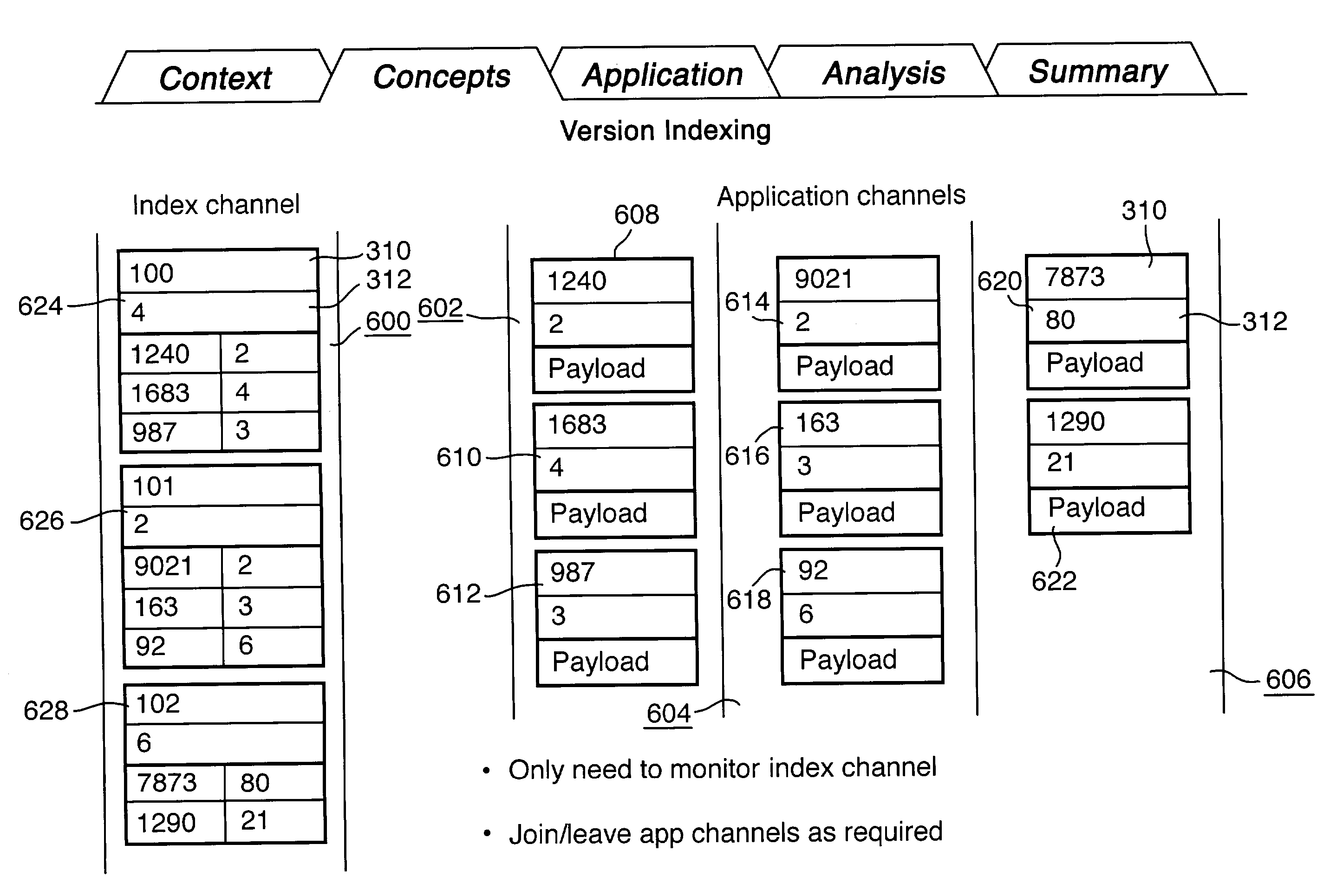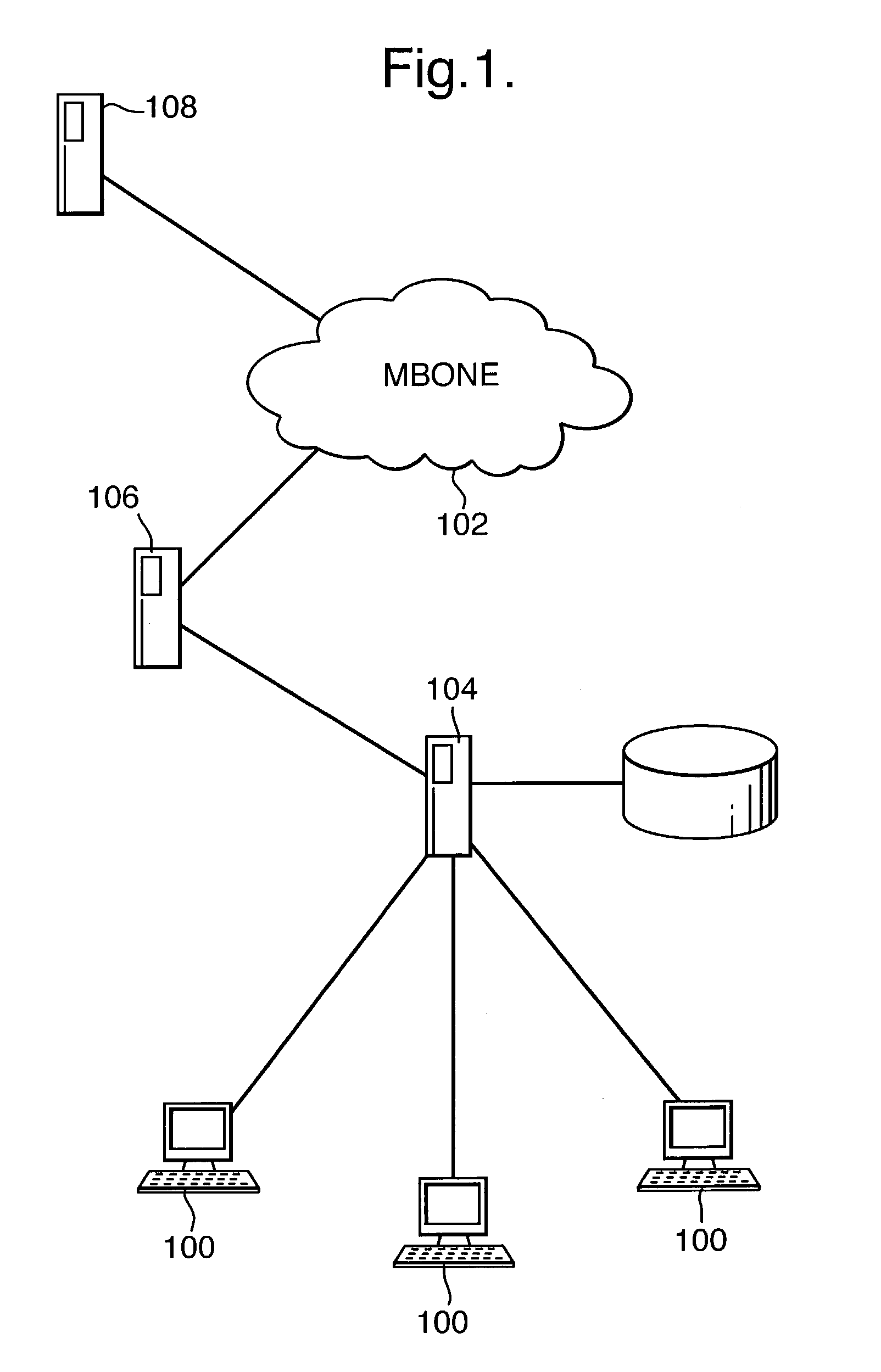Protocol for multicast communication
a multicast communication and protocol technology, applied in the field of communication transport protocol, can solve the problems of only discovering changes, affecting the performance of the network, and the announcement rate of sap is relatively low, so as to reduce the repetition cycle time and data processing capacity
- Summary
- Abstract
- Description
- Claims
- Application Information
AI Technical Summary
Benefits of technology
Problems solved by technology
Method used
Image
Examples
example
[0109]nr=6000, ta=3600, require tr>0.6 s, that is to say the announcement repetition period, tr can be as low as 0.6 seconds before the client / server unicast approach is a more efficient solution.[0110]2) For the receiver (or client) side:
[0111]The receiver or client-side network load is inevitably higher than it would be for unicast. However, the concept of channel indexing reduces this load considerably, so that over a ‘quiet period’ (no changes), typical bandwidth use would be in the order of a few thousand bits per second. This will temporarily increase whenever the receiver joins an application channel to obtain an announcement of interest.
[0112]In one example the above described protocol is used for disseminating tariffs and metering parameters in a dynamic pricing environment for IP network usage charging as described in the applicants co-pending International patent application no. PCT / GB 99 / 01765. This application discloses the concept of keeping customers up to date with t...
PUM
 Login to View More
Login to View More Abstract
Description
Claims
Application Information
 Login to View More
Login to View More - R&D
- Intellectual Property
- Life Sciences
- Materials
- Tech Scout
- Unparalleled Data Quality
- Higher Quality Content
- 60% Fewer Hallucinations
Browse by: Latest US Patents, China's latest patents, Technical Efficacy Thesaurus, Application Domain, Technology Topic, Popular Technical Reports.
© 2025 PatSnap. All rights reserved.Legal|Privacy policy|Modern Slavery Act Transparency Statement|Sitemap|About US| Contact US: help@patsnap.com



